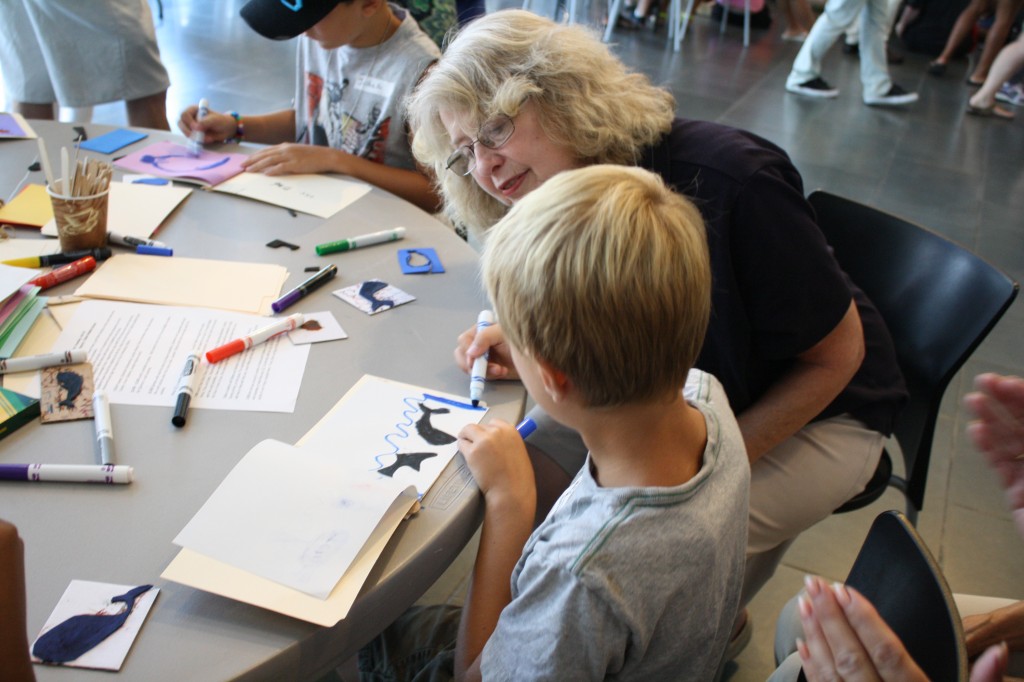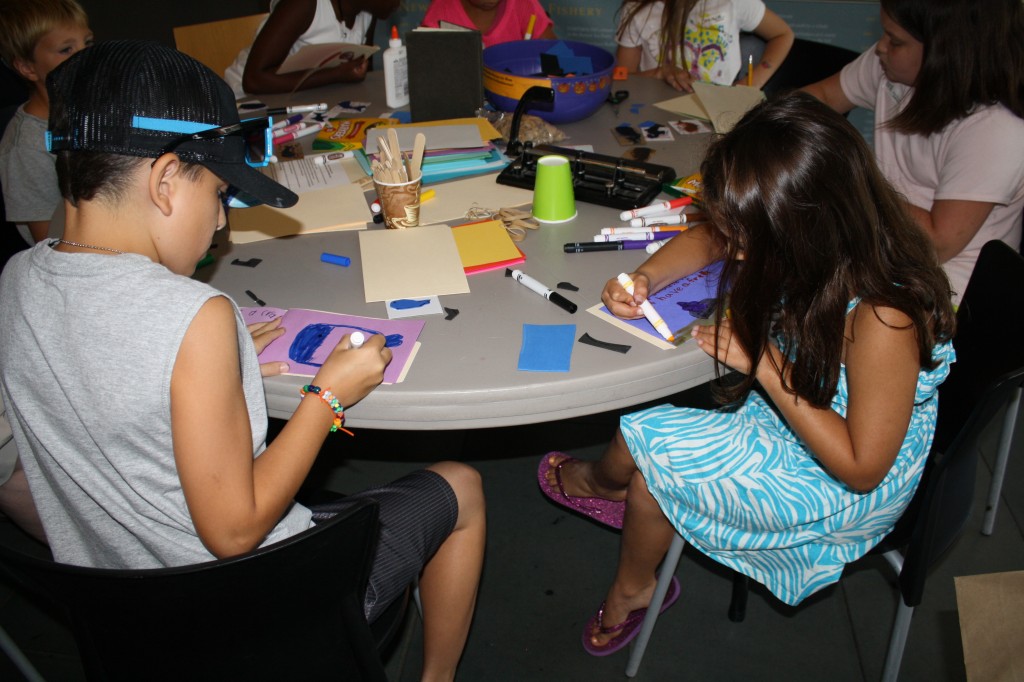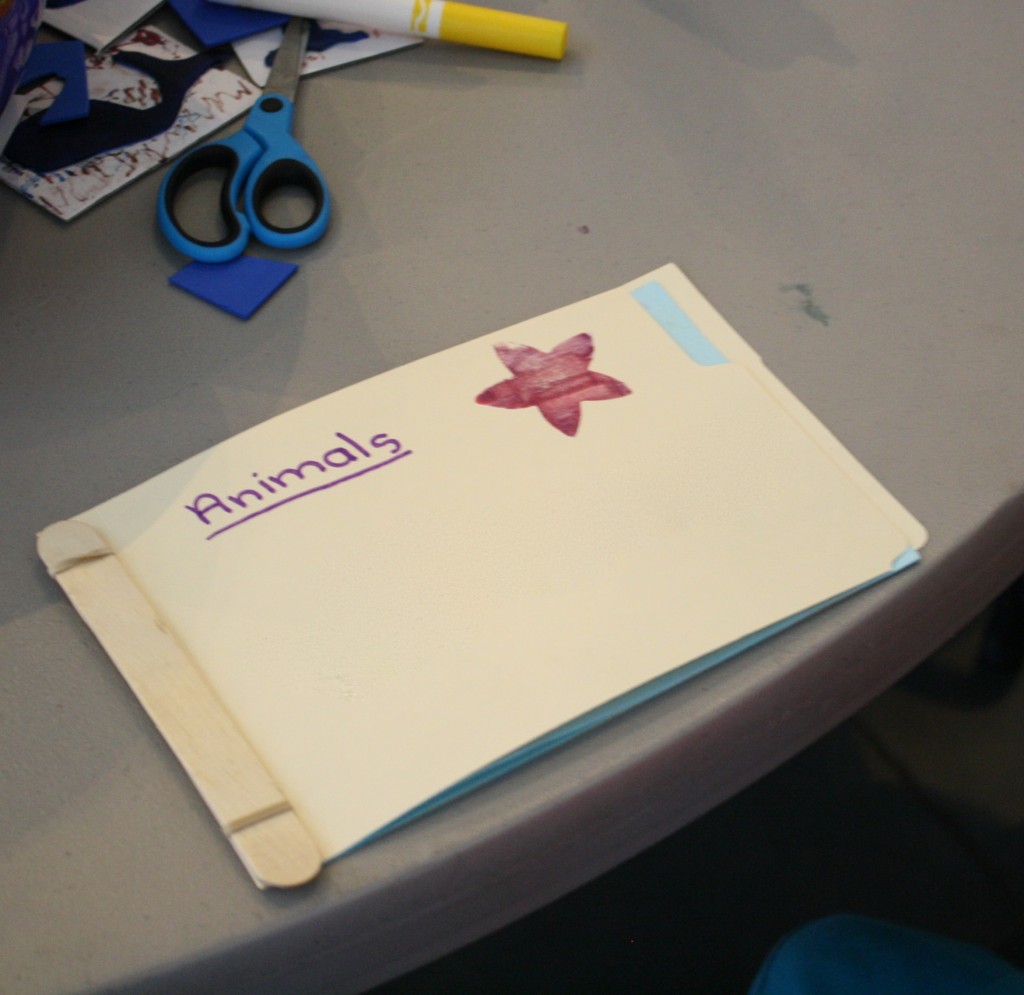A Whaler’s Life for Me: Interning at the New Bedford Whaling Museum
Sarah Hartshorn Hilton, Class of 2016, spent the summer of 2013 as an Education Intern at the New Bedford Whaling Museum, supported by a Caroline Edwards Fellowship in the Wheaton Fellows Program. Sarah became interested in working in a museum through her experience as a student conservator on the work-study team for the Permanent Collection. Here is her story:
Before the summer of 2013, I had never seen a whale, been on a whale watch, or read Moby Dick. That being said, I could not have found a more fantastic place to learn about whales than the New Bedford Whaling Museum! As an education intern, I worked with the Education Programs Manager and the museum’s docents; and I gave tours, developed craft activities to encourage reading and writing, and even designed “A Whalers Life for Me”, an educational program for 1st to 3rd graders.
For the first few weeks, I shadowed school tours to learn about the museum and to see how the docents engaged visitors. When it came time to give my first tour, I felt prepared; but I soon realized the true depth of knowledge and confidence it takes to lead a group of students through a museum. 90 minutes later, I returned to the education office exhausted from fielding questions, corralling fidgety kids, and trying to keep my facts straight. I was filled with a new appreciation for the docents who lead tours every day. As the summer went on, my tours became smoother and I learned to think of them as a conversation, using students’ knowledge and questions as a springboard to learning about whaling. Interacting with visitors soon became one of my favorite internship activities. I loved hearing their reactions to the living conditions onboard whaling ships, where the decks were swabbed with fermented urine and cockroaches ate from sailors’ beards.
My major project was creating a logbook activity to encourage student writing. On board a whaling ship, the captain or first mate used a logbook to record daily activities, including any whales captured or seen. I had students create their own logbook and whale stamp, which they then carried through the museum, pretending to be crew members on board a whale ship. By applying skills gained through my Studio Art minor, I was able to take logbooks – objects that students ordinarily glanced over in a display case – and make them exciting and understandable. I found that relating aspects of whaling life to ideas students already understood was the best way to help them learn. For example, when discussing hierarchy on whaling ships, I explained that the captain is like a principal and the first mate is like a teacher: you talk to the first mate every day, but you only see the captain if you are in trouble.
After my summer at the Whaling Museum, it has become clear that a career in education is a good fit for me. I have taught, tutored, and mentored, but throughout my first year at Wheaton, I pulled away from education, thinking the only career option was teaching in classroom. My internship taught me that education is ever present, from learning our politicians’ views on social issues to understanding how our national budget works to seeing history come alive in museums. Interning at the New Bedford Whaling Museum affirmed my academic path at Wheaton – a major in History with minors in Public Policy and Studio Art – and taught me far more about whales then I ever thought possible.
My favorite whale facts:
- Two elephants can fit on a blue whale’s tongue, yet its throat is only the size of a basketball!
- A blue whale’s heart is the size of a Volkswagen Beetle.
- While working onboard a whaling ship, Rowland Hussey Macy had a red star tattooed on his hand. Years later, the red star became the logo for his department store, the world famous Macy’s.



-
Categories:
- Permanent Collection